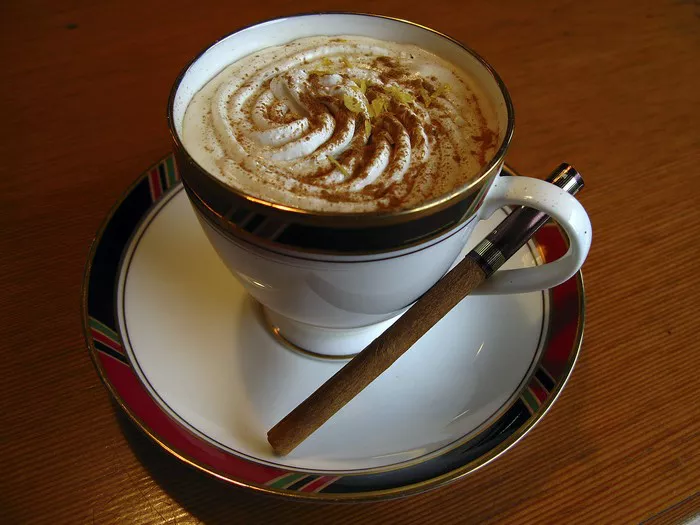In the contemporary realm of coffee consumption, where sleek coffee machines adorn modern kitchens and cafes, it’s easy to overlook the rich history and intricate processes that once defined the art of brewing coffee. Before the advent of sophisticated coffee makers, the preparation of this beloved beverage was a manual and often labor-intensive endeavor. Delving into the past unveils a world where coffee making was a cherished ritual, steeped in tradition and craftsmanship. Join us as we embark on a journey to explore the fascinating methods and techniques employed in brewing coffee before the era of coffee makers.
Origins and Early Practices
The history of coffee dates back centuries, with its origins rooted in the ancient coffee forests of Ethiopia. Legend has it that it was in these lush forests that the energizing properties of the coffee bean were first discovered by a goat herder named Kaldi. From Ethiopia, the cultivation and consumption of coffee spread to the Arabian Peninsula, where it became an integral part of Islamic culture.
In its early days, coffee was brewed using rudimentary methods. The beans were roasted over an open fire, then ground by hand using a mortar and pestle. The resulting coarse grounds were then boiled in water to extract the flavors, creating a potent brew known as qahwa. This traditional method of coffee preparation laid the foundation for the intricate rituals that would later define coffee culture around the world.
Rise of the Turkish Coffee Culture
During the Ottoman Empire, coffee drinking reached new heights of sophistication with the emergence of Turkish coffee culture. The Turks perfected the art of brewing coffee using a special pot called a cezve, also known as an ibrik. Made of copper or brass and adorned with intricate designs, the cezve became synonymous with Turkish coffee brewing.
To prepare Turkish coffee, finely ground coffee beans were combined with water and sugar (if desired) in the cezve and placed over hot coals or a low flame. As the mixture heated, it would begin to froth and rise, signaling the ideal time to pour it into small, delicate cups. Turkish coffee was often served with a glass of water to cleanse the palate and enjoyed as part of social gatherings and ceremonies.
European Influence and the Birth of the Coffeehouse
The introduction of coffee to Europe in the 17th century marked the beginning of a new chapter in the history of coffee making. Coffeehouses, known as “penny universities” for their role as intellectual hubs, sprung up across major European cities, becoming centers of social, political, and cultural exchange.
In Europe, coffee was typically brewed using a variety of methods, including infusion, decoction, and percolation. One popular method involved steeping coarsely ground coffee beans in hot water, similar to how tea is brewed. Another method, known as decoction, involved boiling the coffee grounds in water to extract the flavors.
The Advent of Brewing Devices
As coffee’s popularity continued to soar, inventors and entrepreneurs began devising mechanical devices to streamline the brewing process. One notable invention was the coffee percolator, patented by Parisian tinsmith Joseph-Henry-Marie Laurens in 1819. The percolator used gravity to circulate water through a chamber containing coffee grounds, resulting in a more efficient and consistent extraction.
Another significant development was the vacuum coffee maker, which emerged in the 19th century. This innovative device utilized a combination of vacuum pressure and siphoning to brew coffee, producing a cleaner and more flavorful cup compared to other methods.
Handcrafted Brewing Methods Today
Despite the proliferation of coffee makers and automated brewing systems, there remains a steadfast appreciation for handcrafted brewing methods among coffee enthusiasts. From the meticulous pour-over technique to the centuries-old tradition of brewing coffee in a cezve, artisanal methods continue to thrive in the modern coffee landscape.
Pour-over brewing, popularized by Japanese coffee culture, involves pouring hot water over coffee grounds in a controlled manner, allowing for precise extraction and flavor profiling. This method emphasizes the use of high-quality, freshly ground coffee beans and careful attention to brewing parameters such as water temperature and pouring technique.
Similarly, the resurgence of interest in traditional brewing methods like the French press, Chemex, and AeroPress underscores a desire for greater control and customization in the coffee-making process. These manual brewing devices offer coffee aficionados the opportunity to experiment with different brewing techniques and ratios, resulting in a truly personalized coffee experience.
Conclusion
As we reflect on the evolution of coffee making from its humble origins to the present day, it becomes clear that the essence of coffee lies not only in its flavor and aroma but also in the rituals and traditions that surround it. While coffee makers may have revolutionized the way we brew coffee, they cannot replicate the artistry and soulfulness of handcrafted methods.
By exploring the practices and techniques of coffee making before the era of coffee makers, we gain a deeper appreciation for the craftsmanship and ingenuity of those who came before us. Whether it’s savoring a cup of Turkish coffee brewed in a cezve or mastering the delicate art of the pour-over, let us continue to honor and preserve the rich heritage of coffee making for generations to come.

